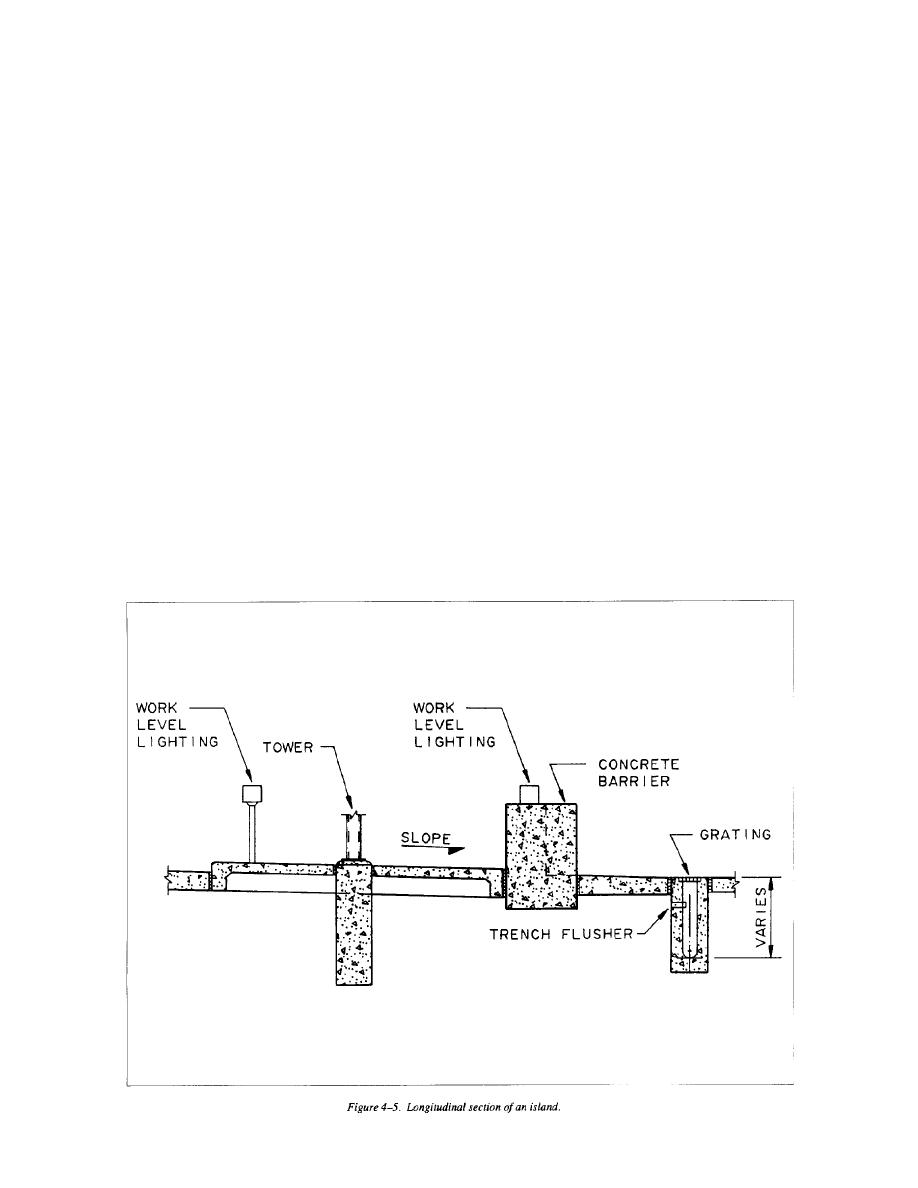
TM 5-814-9
b. Trench drains. Open-grated trench drains are provided to
Trench drain flushing system. The trench flushing
(2)
move soil-laden wastewater from the paved staging and wash
system consists of a supply line with motor-oper-
station areas to the wastewater collection system. Figure 4-7
ated valve and nozzle injection points along the
shows a typical trench drain in cross section. The trench should
trench drain. An adequate slope must be maintained
have a circular (U-shaped) bottom with a smooth surface for
in the trench which will move the dirt and debris to
good open channel hydraulics and abrasion resistance. Grating
the collection system. Flow velocities of at least S
should be galvanized steel or cast iron and able to support the
fps (1.5 meters per second) are required. Trench
vehicle loads to be imposed. Grate openings should be at least
slopes shall be at least 2 percent. Bottom grades at
1 inch (2.54 centimeters) wide to allow gravel to pass through.
bends, junctions, slope changes, and section
Grating sections should be of a weight and attachment design
changes in the trench drains should be designed for
that allow easy removal for maintenance of flow in the trench
energy losses. The flushing nozzles are located in
drain system.
the trench just above the normal flow surface and
point downward and downstream. Flushing is
Trench drain layout. Trench drains are usually
(1)
accomplished intermittently during vehicle washing
oriented transverse or diagonally across the direc-
periods and during cleanup operations at the wash
tion of vehicular traffic. A trench drain system is
station trenches, and only during cleanup in other
required the length of each row of wash stations at
staging area trenches. Flush system control by the
the entrance end (see figs 2-1, 4-1, 4-2 and 4-3).
facility operator is critical and is independent of
The location of additional trench drains in the
other pumping supply systems. Flushers are op-
staging areas will depend on the following:
erated only when necessary in order to conserve
water and power. A well designed flushing system
(a)
The amount and distance that soil-laden mate-
utilizes water drawn from the equalization basin as
rial must be moved during wash area cleanup
discussed in chapter 6.
operations.
c. Wastewater collection system.
(b)
The location of staging area hose hydrants and
General. Wastewater and stormwater collected on
their effective area of coverage.
(1)
the paved areas and moved to the trench drains are
4-6


 Previous Page
Previous Page
